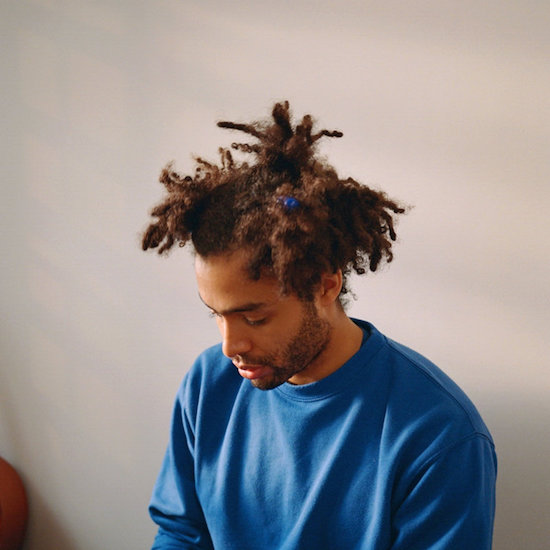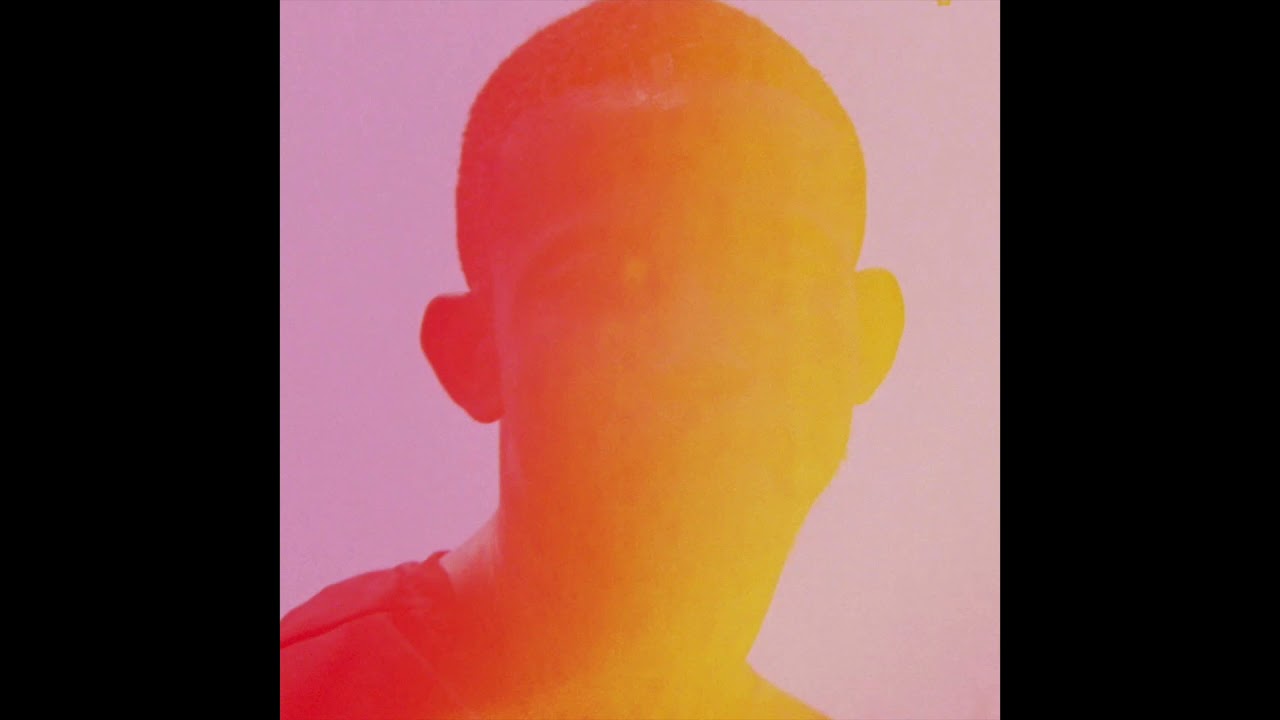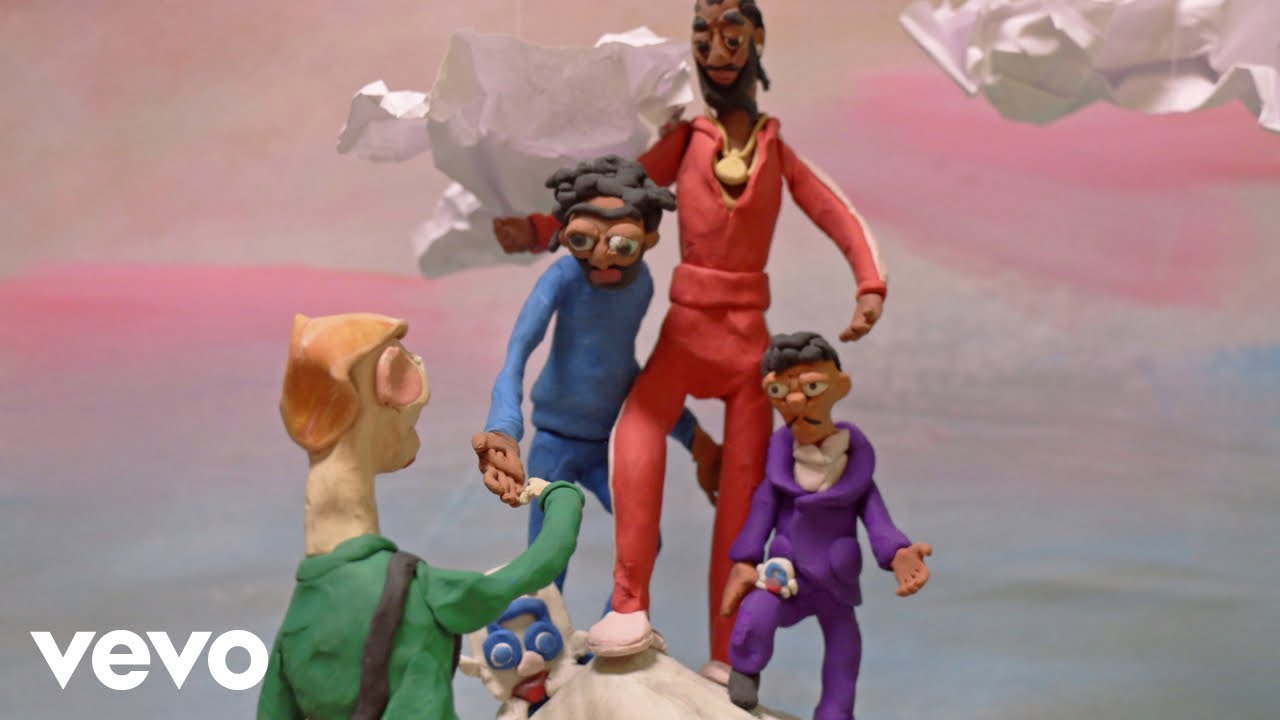"I don’t call myself someone that has synaesthesia, but I definitely equate sounds to colours," Duval Timothy tells me over a Zoom call. He’s at his parents’ home in South London, where he’s spent most of lockdown, having managed to catch an emergency flight back from Freetown, Sierra Leone. "When people talk about synaesthesia, they talk about colours as if they’re one thing, but they’re not. There’s no one red. If you have a red, it’s about how the light’s hitting it, it’s about the texture and the quantity of colour."
The relationship between sound and colour is one of the threads that runs through our conversation, but in speaking to Timothy, it’s clear that we’ll be changing topics frequently, in a way that mirrors the myriad creative projects he’s involved in. Music, painting, weaving, cookery – he’s the co-founder of a pop-up restaurant called The Groundnut – his multi-disciplinary practice seems to evolve constantly.
Yet all of his creative endeavours seem to coalesce around similar themes; in particular, explorations of identity: the joy, as well as the weirdness and complexity, of being of mixed African and European heritage, navigating a life split between London and Freetown, and exploring his own family history in light of larger historical forces. His new album, Help – the fourth since his 2012 Bandcamp debut Dukobanti – is built around deceptively simple piano hooks that could slip you by on first listen, but it’s a complex and multi-faceted record that draws on both abstract art and the traditions of sampling and looping taken from hip hop, to address very concrete concerns such as mental health and the legacies of transatlantic slavery.
If Help sounds dense and inaccessible on paper, it’s actually quite the opposite. There’s a grace to his minimalist compositions, and minimalism is one of the common denominators of the seemingly disparate artistic disciplines he works in. He acknowledges his own tendencies as a polymath, but finds ways to focus: "I’m only ever doing two projects seriously at any one time. I devote myself to that. I feel like all these things, they’re different languages, but I’m kind of doing the same thing in each."
From a young age, an artistic family background helped push him towards a creative path: "Both my parents are artists that decided to choose a career in architecture because it seemed more realistic for them. We grew up with loads of art around the house, and music as well. My brother’s a producer, he was making grime from when he was 13. Witnessing how he worked with artists was a huge influence. My sister is an artist, she draws."
For someone who displays such an obvious affinity with the piano, it actually began as a side project. "I had some piano lessons when I was in school for a few years," he says. "I never achieved being able to read music, it took a month to learn quite a simple song. Eventually I stopped having the lessons and a friend showed me some chords – it was an Amy Winehouse track – and I just started making up progressions on my own that naturally formed into songs."
After studying art at Central St Martin’s, Timothy found himself on a fine art trajectory, putting on exhibitions and installations in and around South London. An early interest in abstract art and minimalist techniques began to creep into other areas of his creative life. The track ‘Look’, on Help, features a monologue by American artist Ellsworth Kelly, who was known for his Colour Field paintings which used bold blocks of colour. For Timothy, focusing on the intricacies and textures of one colour at a time resembles sampling techniques used in hip hop: stripping a song back to just a breakbeat and building a whole track around that. "No distraction, no decoration," as he puts it.
These preoccupations had already begun to manifest in his early releases. His debut, Dukobanti, was built entirely on piano melodies, which garnered him a small but notable following online, yet his entry into the music industry happened almost by accident. "I felt like that was the time when the internet was a bit more free. People would pay attention and there were less invisible barriers. It didn’t take off but it had a little life of its own in the SoundCloud/Bandcamp world. Then I made this record, Brown Loop, which is based on the idea of equating colours with sounds."
Even though he was beginning to find success as a musician, dropping regular releases and creating his own label, Carrying Colour, Help itself came out of a difficult period, as the financial pressures of hustling to make art and music a viable career began to take their toll. "I was in a bit of a slump," he admits. "I was quite depressed, feeling anxiety and agoraphobia and these kind of things. I was sampling a bunch of self-help stuff from YouTube. I wanted to make a self-help book as an album and then, through the process of working on it, it felt like it didn’t actually need most of the samples, so I just pulled them out."
As well as exploring the interplay between music and colour, and the uses of music as a form of healing, Help sets its sights on the often exploitative power play on which the mainstream music industry depends. The track ‘Slave’ features a vocal sample of Pharrell Williams, pulled from YouTube, dissecting the ‘master/slave’ dynamic in the industry, something which chimed with Timothy’s own experiences when he was first signing a record deal.
"Finding my way in the music industry, I had this slip up where someone else owned my masters," he says. "It forced me to read up on the whole thing, how this industry works. I was a bit shocked by how exploitative it can be." But there was another dimension to this reflection on exploitative property relations. The track features another vocal sample by his partner, Ibiye Camp, singing the word ‘slave’, which got him thinking about intellectual property and AI: "When I sampled Ibiye singing, I created this sample instrument and it’s almost like I’ve captured her voice. When we create music, it just goes into this system and it has no objective say in what it itself wants to be. Obviously, we don’t think of a track as a person at this stage, but with AI you’re going to get this inevitable thing – civil rights for robots and intelligent coding."
The visual for the single makes this even more explicit: Timothy and Camp sit in a room recording a track, before A&R men come in and capture it, immediately putting it in chains. The video ends thusly, in Timothy’s own words: "I climb this mountain and meet [the late] Nipsey Hussle and Prince at the top of it. Then we look back down the hill and offer a hand to the crooked A&R. It’s not a completely anti-music industry thing; it’s more like this vision of partnership, and everything Nipsey was championing: owning your masters and partnering in a venture."
This preoccupation with slavery also came from spending increasing amounts of time in Sierra Leone. Timothy’s father was born in Sierra Leone to Ghanaian and Sierra Leonean parents, before moving to the UK as a child. After visiting several times on family holidays, Timothy decided to relocate in his mid-twenties, and now spends several months of the year there. Slavery was a foundational building block of the country: Freetown was founded in 1792 by emancipated slaves who arrived in Sierra Leone via London, later to be followed by a group of Jamaican maroons.
This heritage is something Timothy is always conscious of when he returns. "My ethnicity, on the Sierra Leonean part, is Creole. We’re [descended from] freed slaves from Nova Scotia who travelled back to London and founded an African Israel of sorts." Reminders of Freetown’s past, as an entry point for emancipated slaves from the Americas, as well as other parts of West Africa, are everywhere: "They planted the cotton tree which still stands in the centre. That tree is basically at the end of my street. It’s one of the poorest countries in the world and there’s crazy poverty and devastation. You can see how there are still these lines of colonialism, imperialism, slavery. It’s so complicated, but you feel it, it’s around you."
Basing himself in his grandmother’s old house, where he is currently building a studio for local musicians to use, as well as for travellers passing through, he was determined to integrate himself into the local culture as much as possible when he first moved there. "I feel very comfortable when I’m there," he says. "I made an effort to learn the local language, the first time I properly went back. It’s quite easy to break down those barriers when you’re speaking the language. The integration into the culture meant I wasn’t just there as a well-to-do outsider who wants a holiday."
Despite immersing himself into the local culture, however, he says he’s still perceived as an outsider. "It sounds weird for a lot of people but we’re white. People will shout ‘white man!’ at you in the street," he tells me. It’s an experience I can relate to, having travelled to Ghana, where my own father’s family is from. "I always have to keep explaining myself to people out there and it gets frustrating, having to prove I am actually Sierra Leonean. People almost laugh at it; it’s like you’re a novelty."
But if anything, these jarring experiences – having to constantly balance competing perceptions of his own identity – have made for fertile creative ground. They formed the basis of the 2 Sim record, released in 2018, which was based on field recordings and WhatsApp chats with friends. ‘2 Sim’ is a Sierra Leonean expression which refers to someone having two sim cards on their phone, but which alludes to being stranded between two cultures or identities. Help deals with these contradictions in more oblique ways. Themes of identity and belonging hover in the background. But the recorded conversations that formed his previous recordings have been stripped back, with the piano returning to the foreground. He uses the piano almost like he might a paint brush: using broad strokes of colour, which, on closer inspection reveal a variety of textures.
This is also a technique he learnt from Sierra Leonean weaving, at a project called War Wounded, which was founded to teach the craft of weaving to people displaced by the civil war of 1991 to 2002. "That was the excuse I initially used: I’m going to go to Sierra Leone to learn traditional weaving. I started off making figurative paintings, oil paintings and it went into spray painting, monochrome paintings. They’re stretched fabric over a wooden frame. So then I started to think about the fabric itself. More than just buying a fabric I wanted to learn how to make it. I remember seeing the weaving around Freetown, these crazy long thin strips being hand woven, so I thought, ‘Yeah, I’ll go learn that’."
The techniques he learnt came from ingenious means "A lot of the people I was weaving with would go to the local market. They call it The Junks; it’s a second-hand market and you get big sacks of imported clothes that no one’s even looked at. You just buy it all by the weight. You pull through the knitted jumpers and you unthread a yarn from them and then someone will be sitting down, winding that back onto a bobbin. It’s completely deconstructing and reconstructing the fabric. It’s amazing."
Deconstructing and reconstructing; unfurling a thread and turning it into something else. This could just as aptly describe Timothy’s approach to music and art, in which thematic threads – explorations of diaspora, family and identity – have morphed into something else, with the simplicity of the piano melodies allowing you to focus on the details. "When there’s less, you pay more attention to the thing itself. It’s like if you’re listening to ambient music, you start paying attention to the sound of the room, the acoustics, all of those details. I feel the same with the weaving. When you’ve got a plain cloth, you instantly see this is handmade, you appreciate those little nuances."




